African American Rhinoplasty in Virginia, Washington D.C. and Maryland.
At The Naderi Center, African American rhinoplasty is performed with expert precision, cultural sensitivity, and a deep respect for the unique facial anatomy of patients of African descent. Dr. Shervin Naderi, one of the nation’s leading ethnic rhinoplasty specialists, is double board-certified in Facial Plastic Surgery and Otolaryngology–Head and Neck Surgery and has over 20 years of experience in nasal surgery. He limits his practice to nasal surgeries and has performed them for more than twenty years. His work on Black noses keeps the outward appearance natural, and leaves personal identity intact.
Embark on a journey of aesthetic excellence with The Naderi Center. Experience unparalleled artistry and precision for transformative beauty.
Why a Nose Job for African Americans Is Different
Enhancing, Not Erasing Your Identity
The operation adjusts the patient's own contours so the face remains natural, only better proportioned.
Customized Techniques for Your Unique Anatomy
Dr. Naderi has knowledge of thick skin, flexible cartilage, and varied nasal forms; he adapts each step to the single person.
Confidence Rooted in Natural Results
By preserving cultural integrity and avoiding the “overdone” look, patients gain lasting confidence in results that feel authentic and true to who they are.
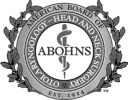
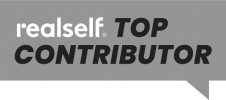
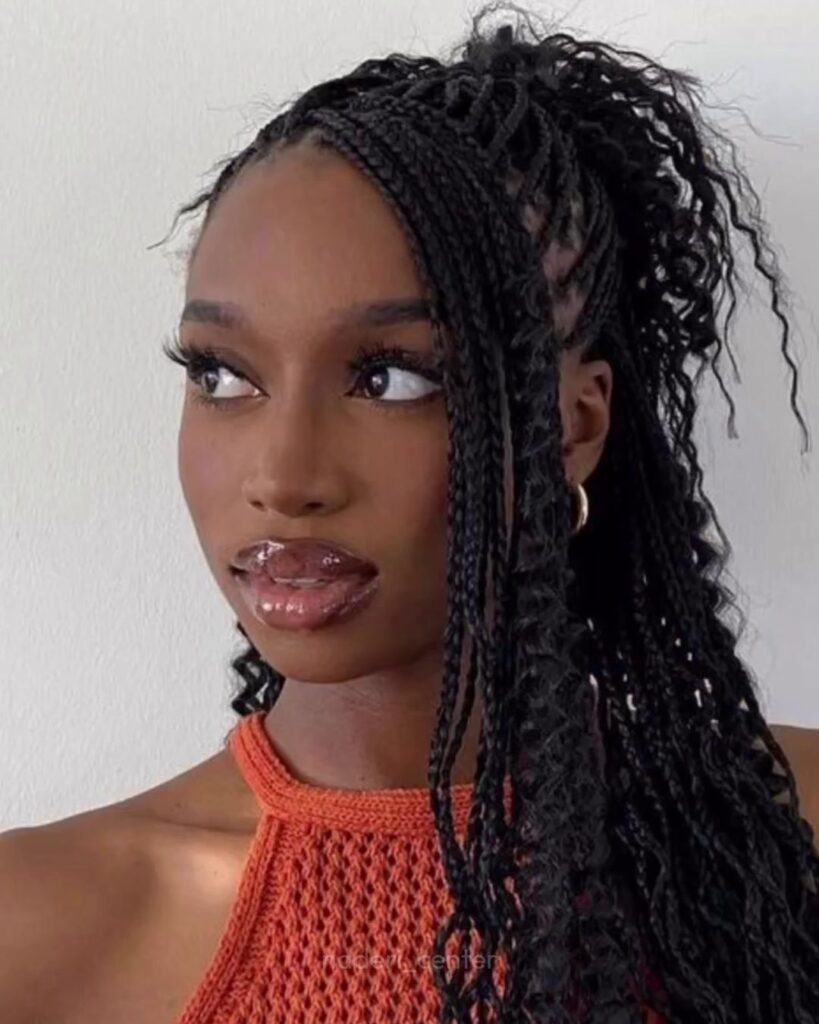
Honoring Ethnic Identity, Not Replacing It
Many African and African American patients come into consultation with a profound concern: “I don’t want to look like I had a nose job,” “I don’t want a white nose,” or “I don’t want a Michael Jackson nose.”
This fear is deeply rooted in decades of mismanagement within the field of rhinoplasty:
- Limited expertise with ethnic anatomy – Surgeons who lack experience with thicker skin and softer cartilage often fail to produce noticeable or lasting changes.
- Stereotyping of nasal features – Surgeons frequently treat all Black noses as identical and apply the same methods to each. Many use dorsal onlay grafts or implants to force a Caucasian look instead of preserving the patient’s original shape.
- Over-aggressive surgery – Some facial plastic surgeons have excessively removed tissue, disregarding both function and the patient’s ethnic identity. The result has been disfigurement and “botched” outcomes that fuel mistrust and anxiety in future patients.
Common Characteristics of African Noses
- Wide nasal bridge
- Flared or wide nostrils
- Thick or oily nasal skin
- Under-projected or soft nasal tip
- Weak or thin tip cartilage
- Short nasal bones
- Flat or undefined nasal dorsum
Each of these traits requires advanced, nuanced techniques—including cartilage grafting, alar base reductions, and careful tip sculpting. Learn more about Rhinoplasty procedures at The Naderi Center.
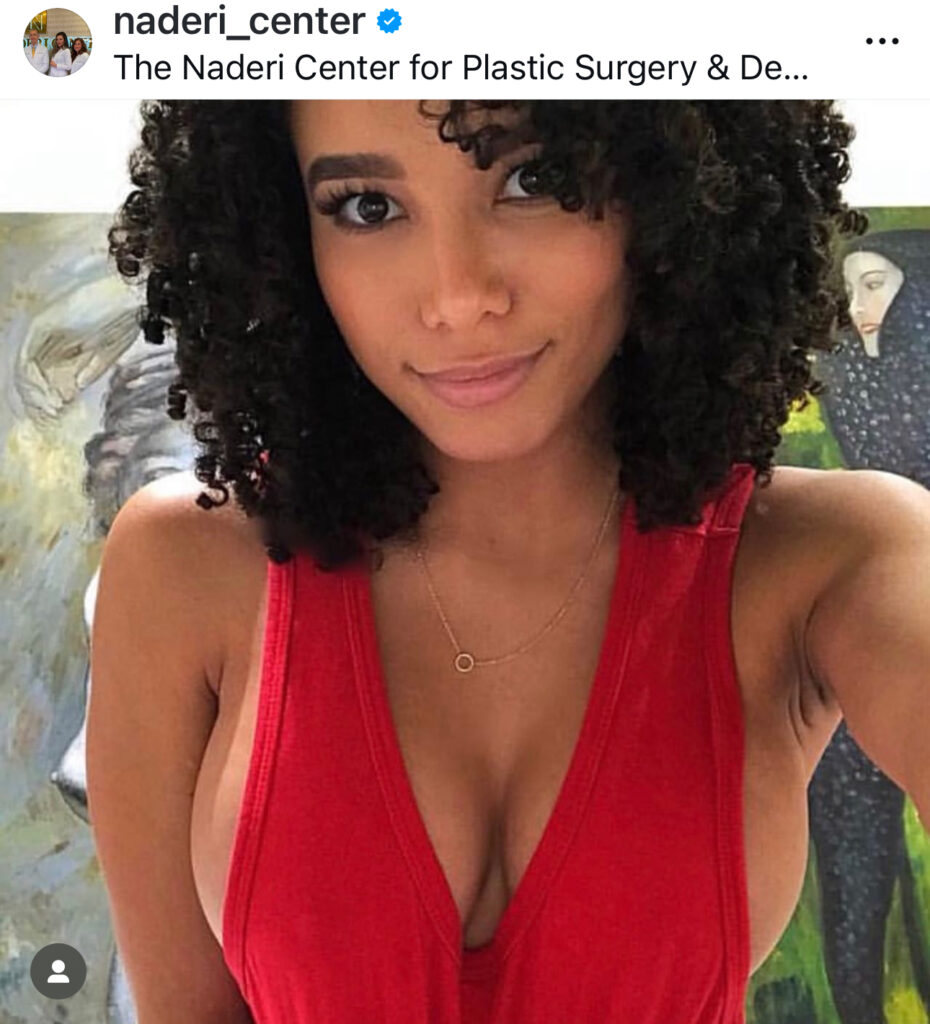
Why Patients Travel to Dr. Naderi
Dr. Naderi sees and treats more Black rhinoplasty patients who travel long distances than most other plastic surgeons in the U.S. Many of them come from across the U.S., Europe, the Caribbean and Africa.
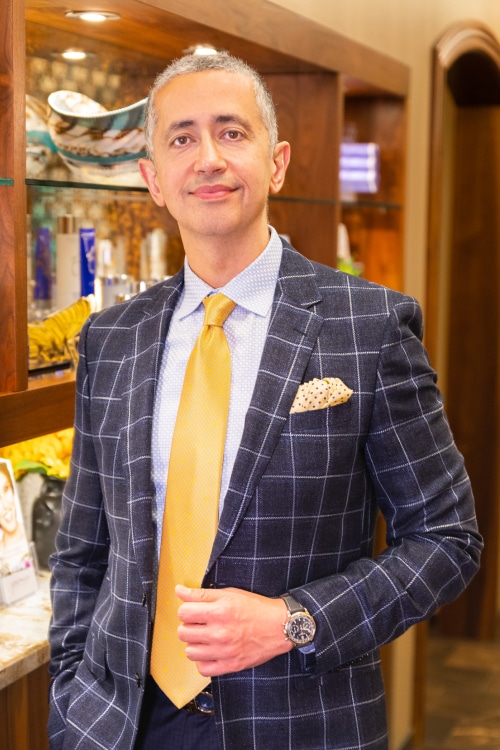
They seek his specific approach: surgery that refines appearance while preserving cultural and individual identity.
“My African patients are thoughtful, cautious, and very aware of what they don’t want. They want improvement, not erasure.” – Dr. Naderi
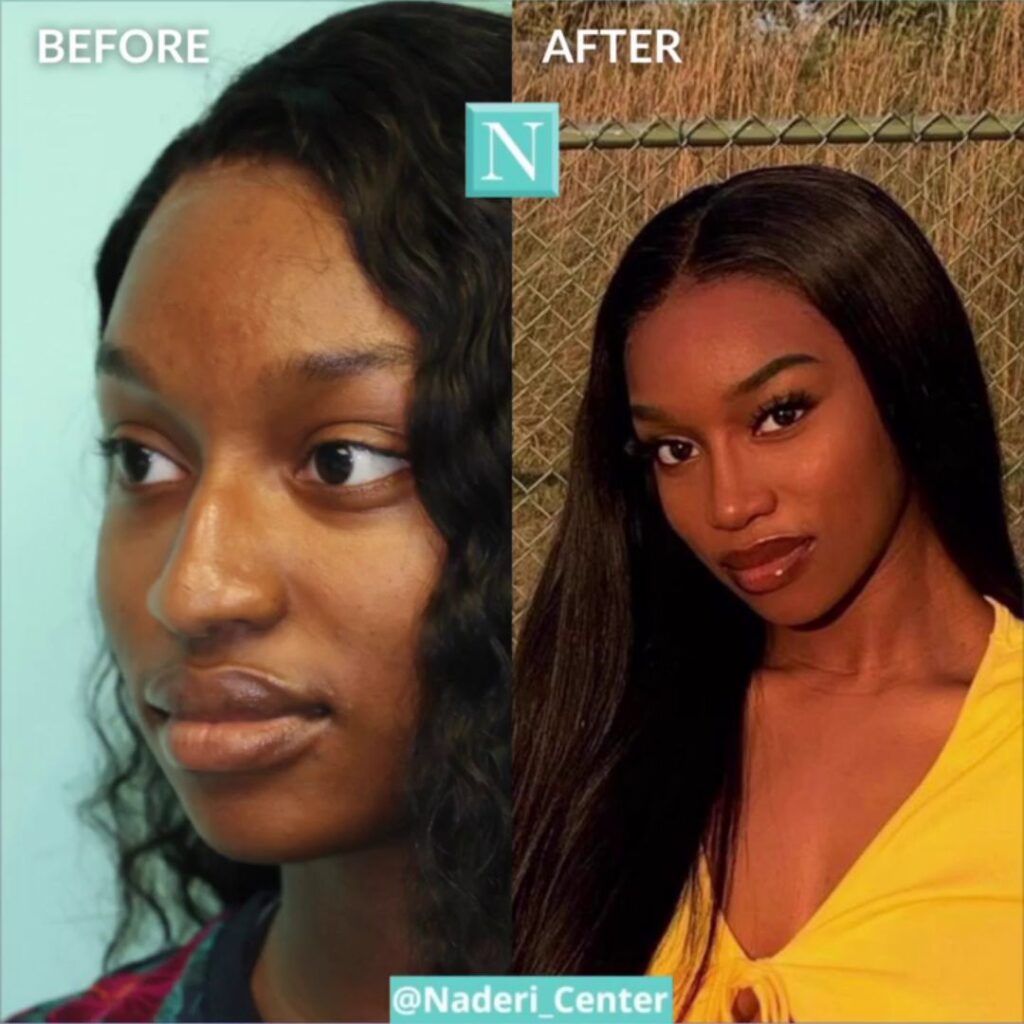
Differences in African, Afro-Caribbean, and Afro-Latin Noses
- West African noses tend to have thicker skin and wider thicker nostrils.
- East African noses can have thinner skin and bonier features
- Afro-Caribbean patients often have flatter nasal bridges with softer cartilage.
- Afro-Latin individuals may have mixed features—sometimes with a pronounced hump or longer nasal bridge.
Understanding these distinctions is essential for natural, ethnically appropriate results.
African American Rhinoplasty Before & After photos
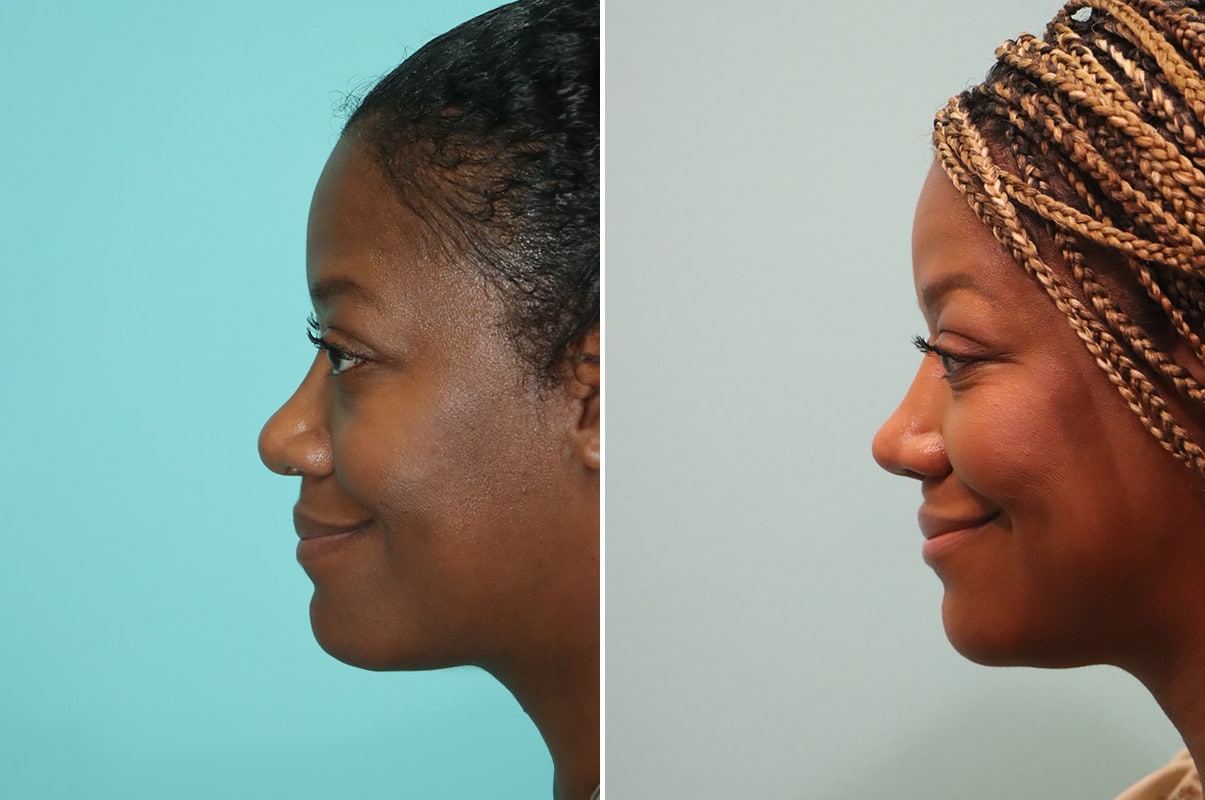
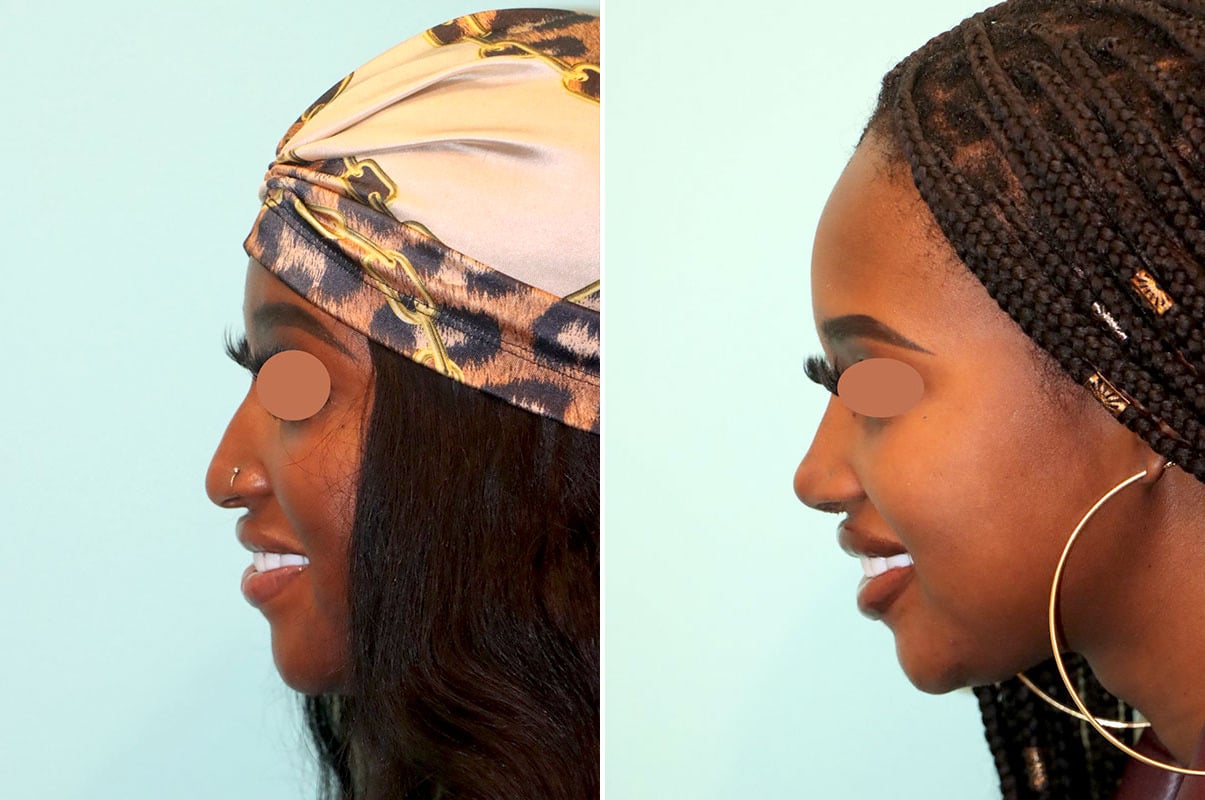
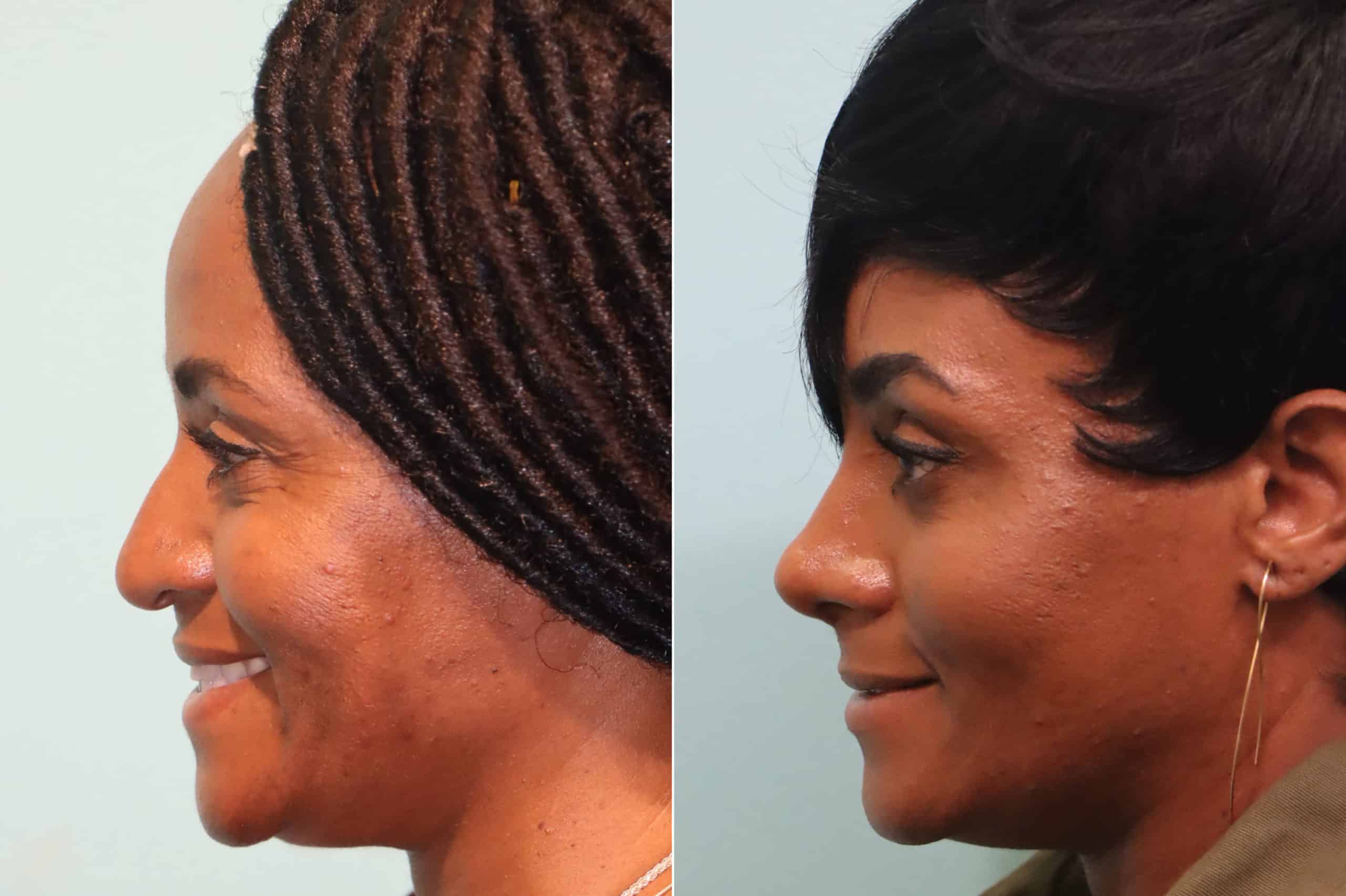
Rhinoplasty for African American Men vs. Women
While surgical principles are consistent, key aesthetic goals differ:
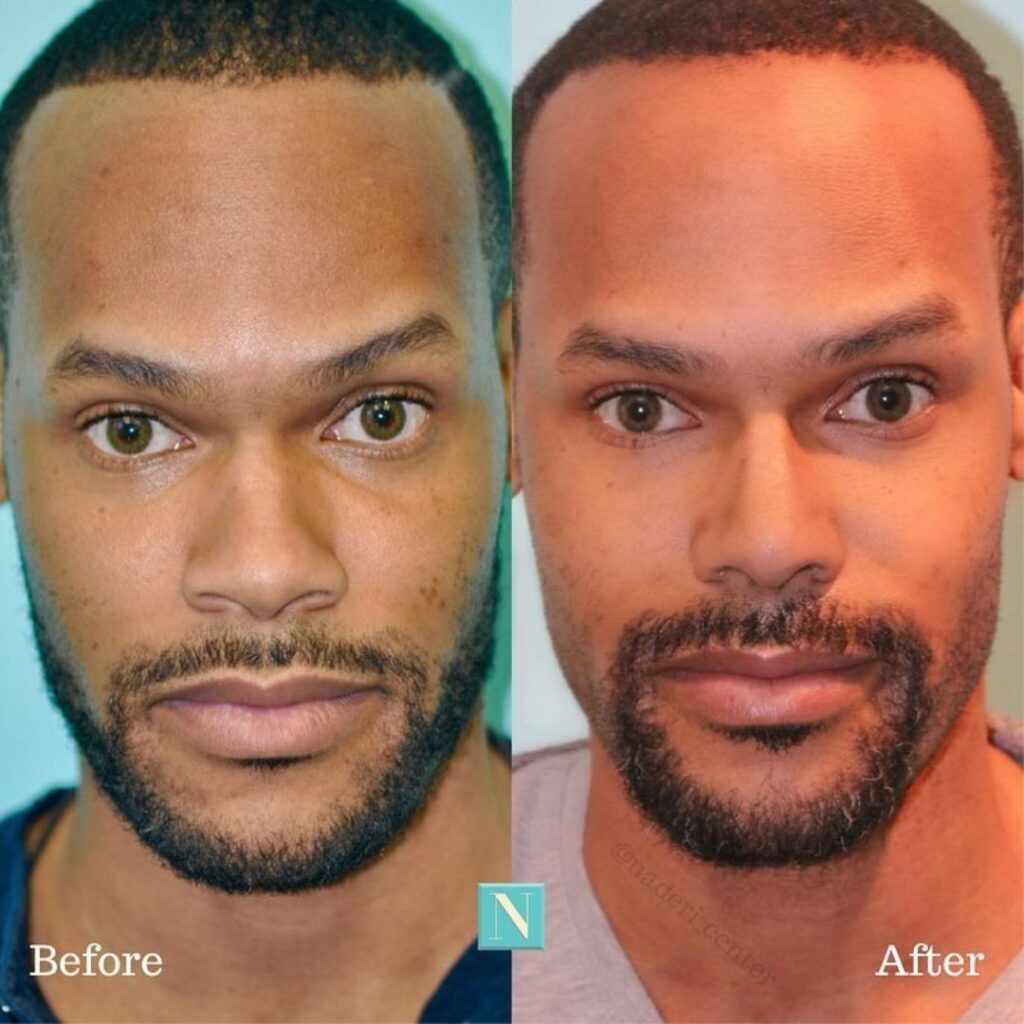
For Men
Male patients often want subtle changes that maintain masculine strength, like a straighter profile with mild tip refinement.
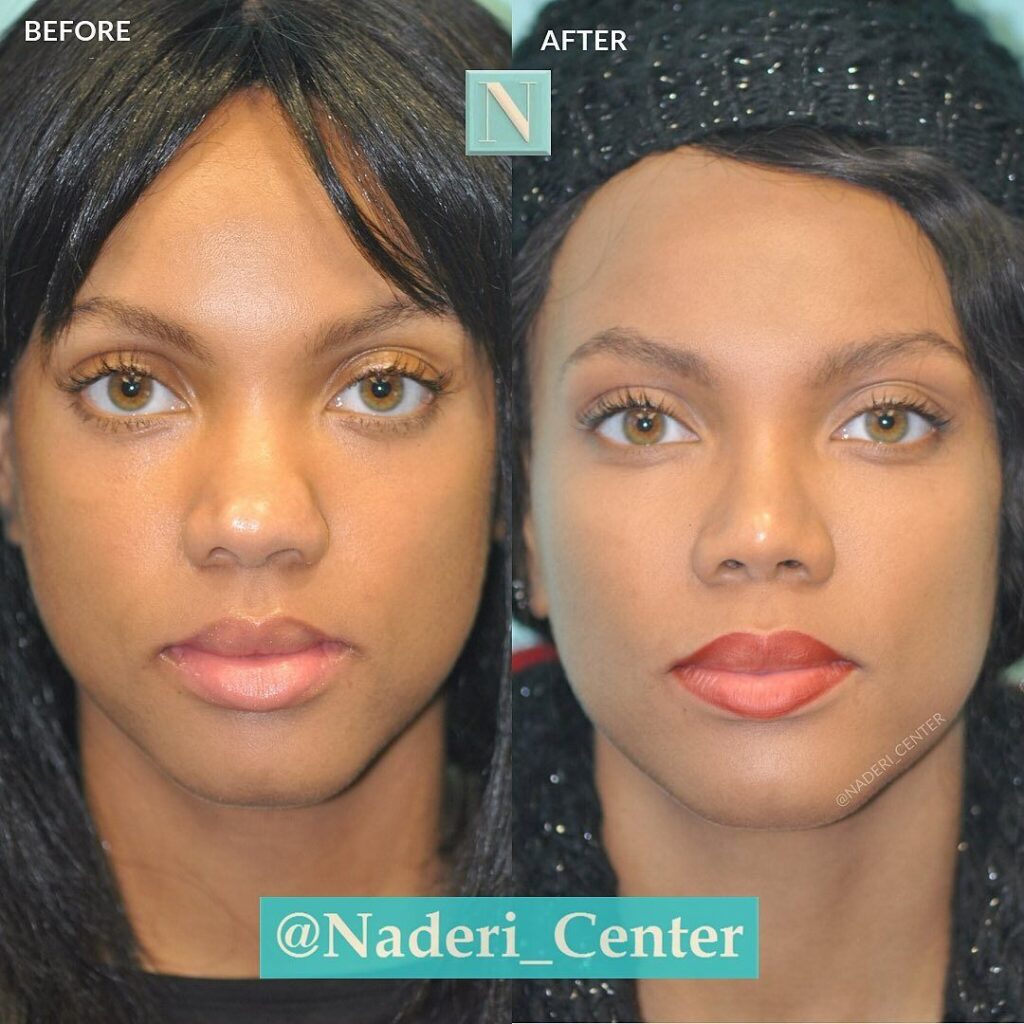
For Women
Female patients request more tip definition and nostril narrowing without over rotating the nose.
Structural Grafting for African Noses
Because nasal tip cartilage in African noses is often weak or underdeveloped and the skin is thick, projection and adding structure is extremely important. Dr. Naderi frequently uses structural grafting techniques for better tip and bridge definition. He usually avoids ear cartilage because it is flimsy and provides poor structural integrity.
“I don’t like using ear cartilage. It’s weak, curved and it doesn’t provide the strength necessary for thick-skinned noses.” – Dr. Naderi
Instead, Dr. Naderi uses:
- Septal cartilage, when available
- Cadaveric rib cartilage (allografts), sterilized and safe and provided from major national tissue banks. Also known as Fresh frozen or irradiated cartilage.
- Patient’s own costal rib cartilage.
These grafts provide a stronger framework, especially important for patients with thicker skin. For more on grafting options, visit our Revision Rhinoplasty page.
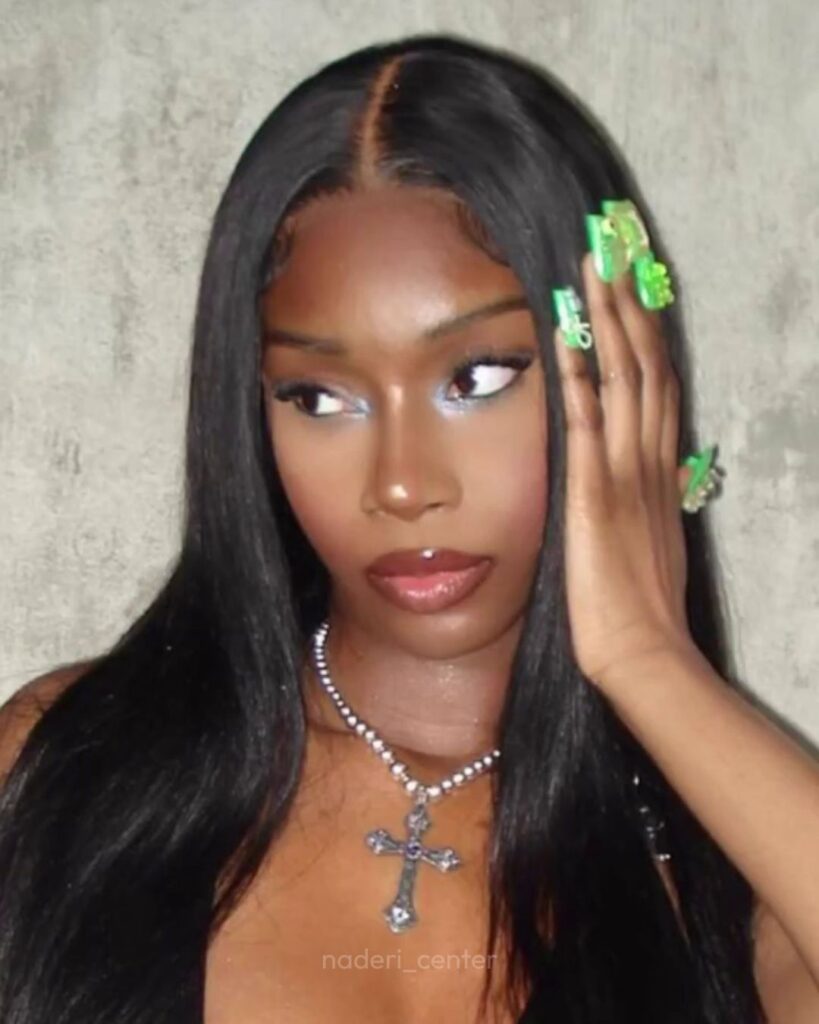
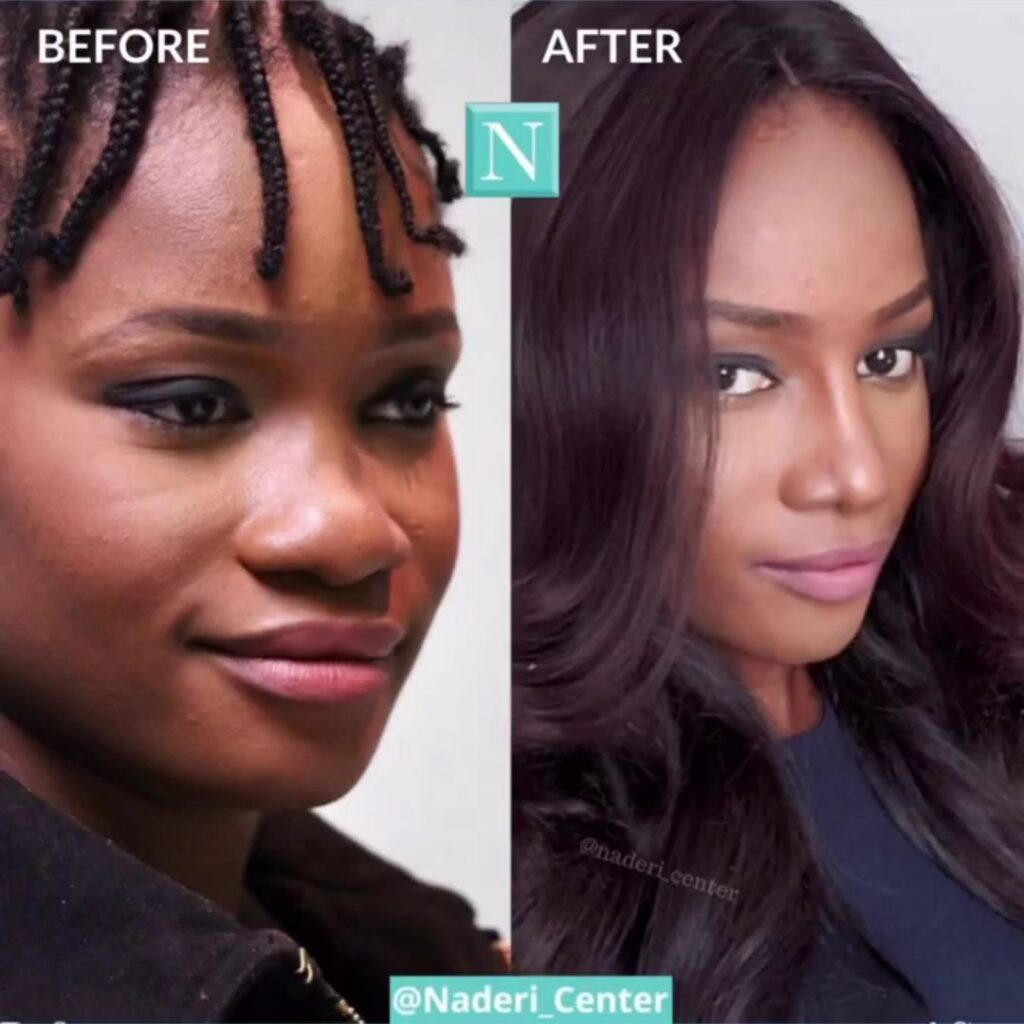
Managing Thick Skin and Healing Expectations
- Pre- and post-operative low-dose Accutane to reduce oiliness and shrink sebaceous glands
- Post-op low-dose corticosteroids to encourage skin contraction and reduce swelling
- Prolonged nasal taping to assist skin adhesion and long-term re-draping
Most patients start to enjoy their new nose as early as 1-3 months after surgery. However, patients should expect up to 18 months to see the “near-final results,” with final results at about 5 years. For details on recovery, see our Rhinoplasty Recovery Guide.
African American Rhinoplasty Before & After photos
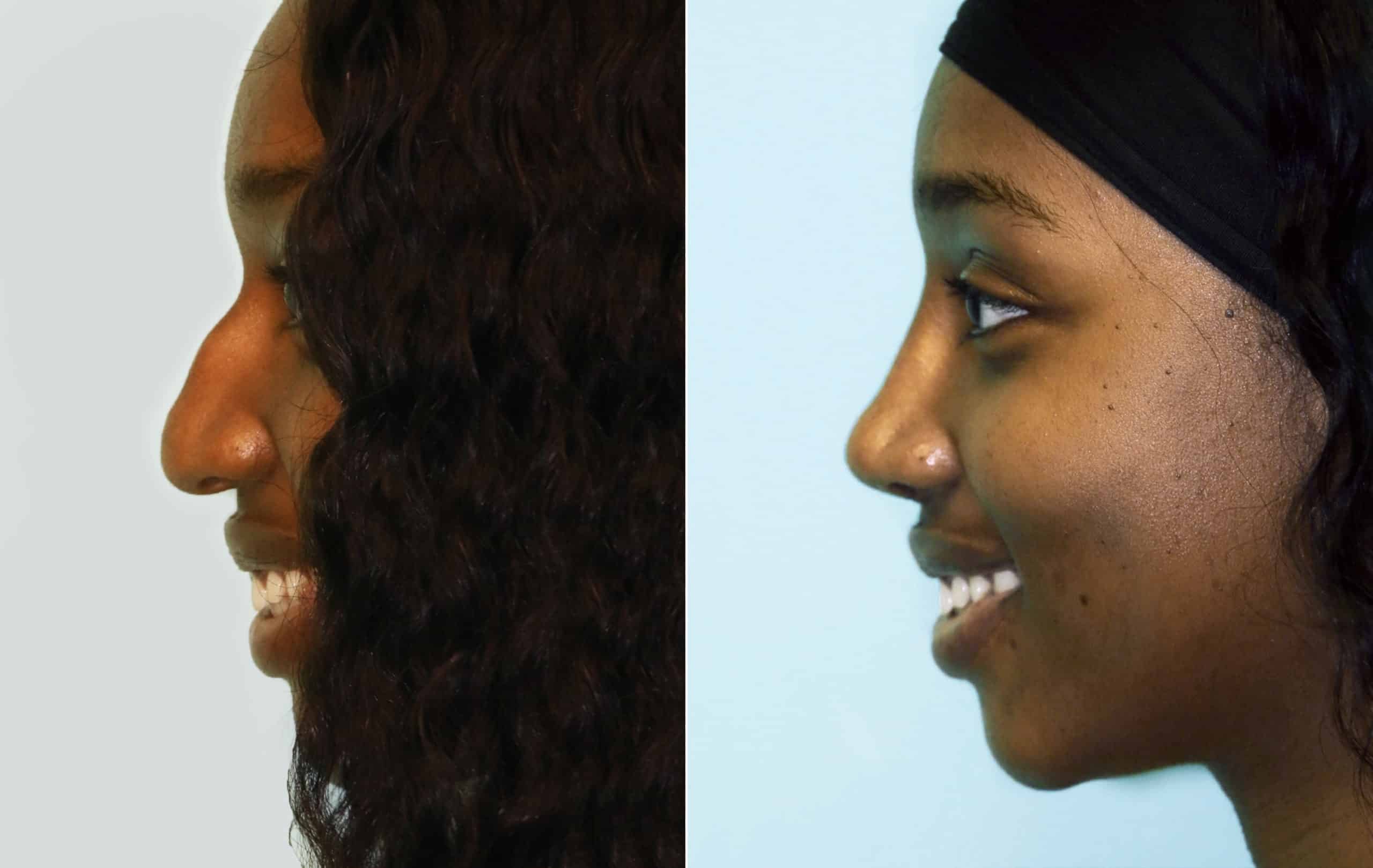
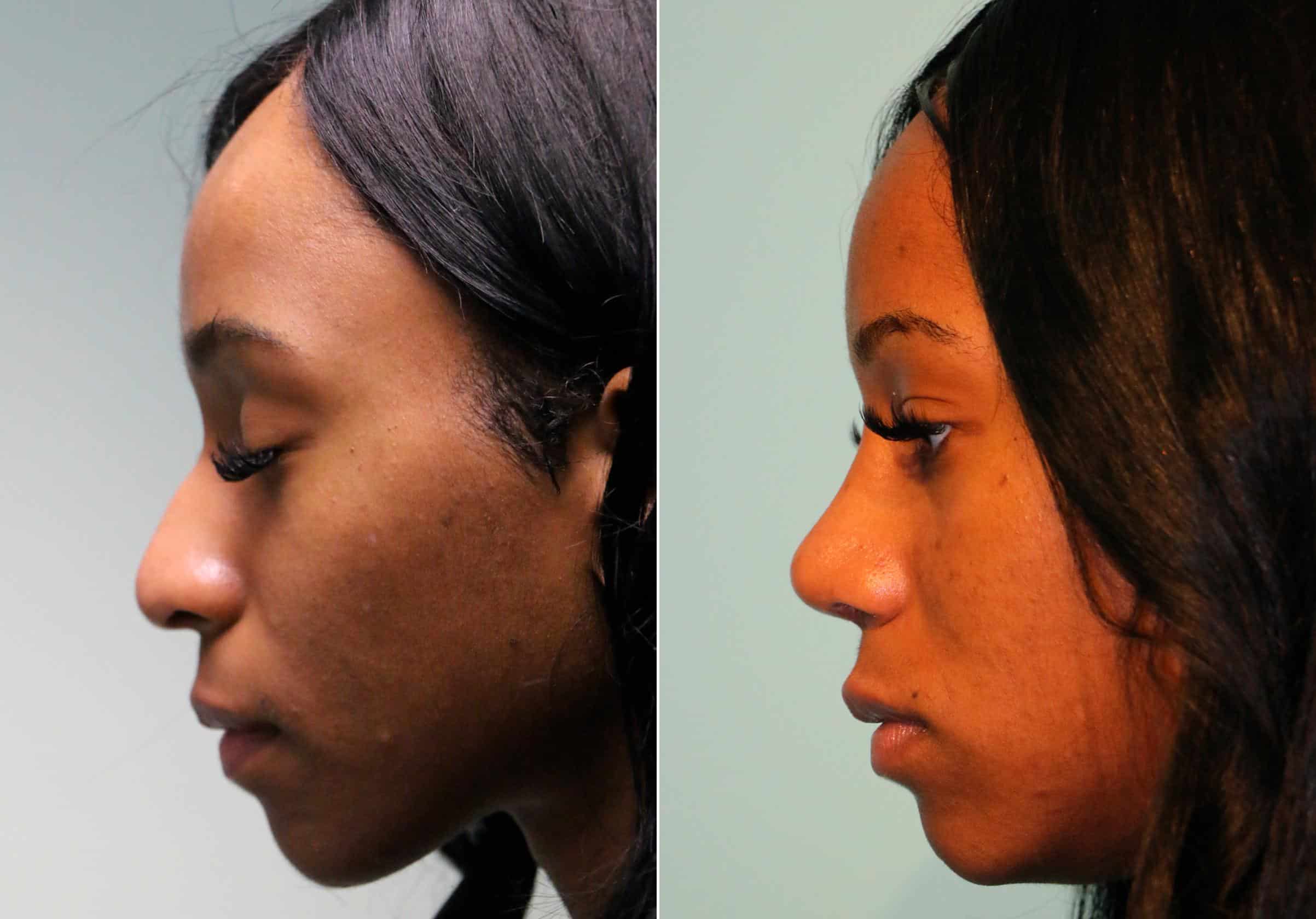
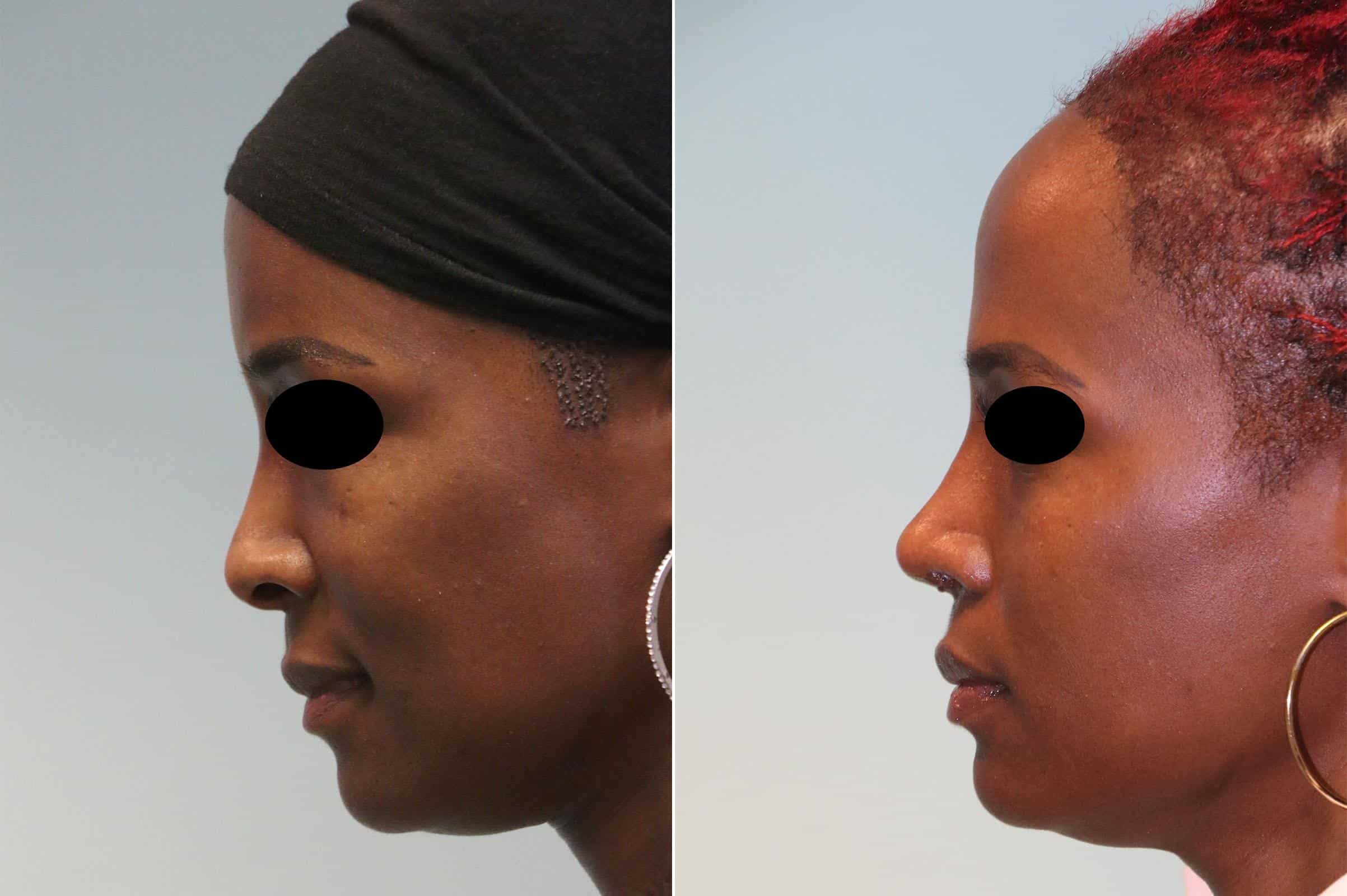
Revision Rhinoplasty for African Descent Patients
- Over-reduced nostrils
- Pinched tips
- Loss of ethnic features
- Collapsed bridges
- Droopy tip
- Lack of definition
- Significant asymmetry
Revision cases require structural rebuilding and a surgeon highly experienced in complex ethnic nasal revision.
Non-Surgical Options for African American Noses
- Add bridge height
- Improve tip projection
- Balance minor asymmetries
Fillers last 6–12 months and don’t replace surgery for many cases however for some patients liquid 5-minute nosejob is actually a better approach than surgery.
How to Choose the Right Ethnic Rhinoplasty Surgeon
- Are they double board-certified in facial plastic surgery and ENT?
- Do they specialize in noses only?
- Can they show African rhinoplasty before-and-after photos?
- Do they have experience with thick skin and wide nostrils?
- Are they known for natural, identity-preserving results?
Dr. Naderi’s credentials and results make him the leading choice for Black rhinoplasty specialists in the U.S. Learn more on our Meet Dr. Naderi page.
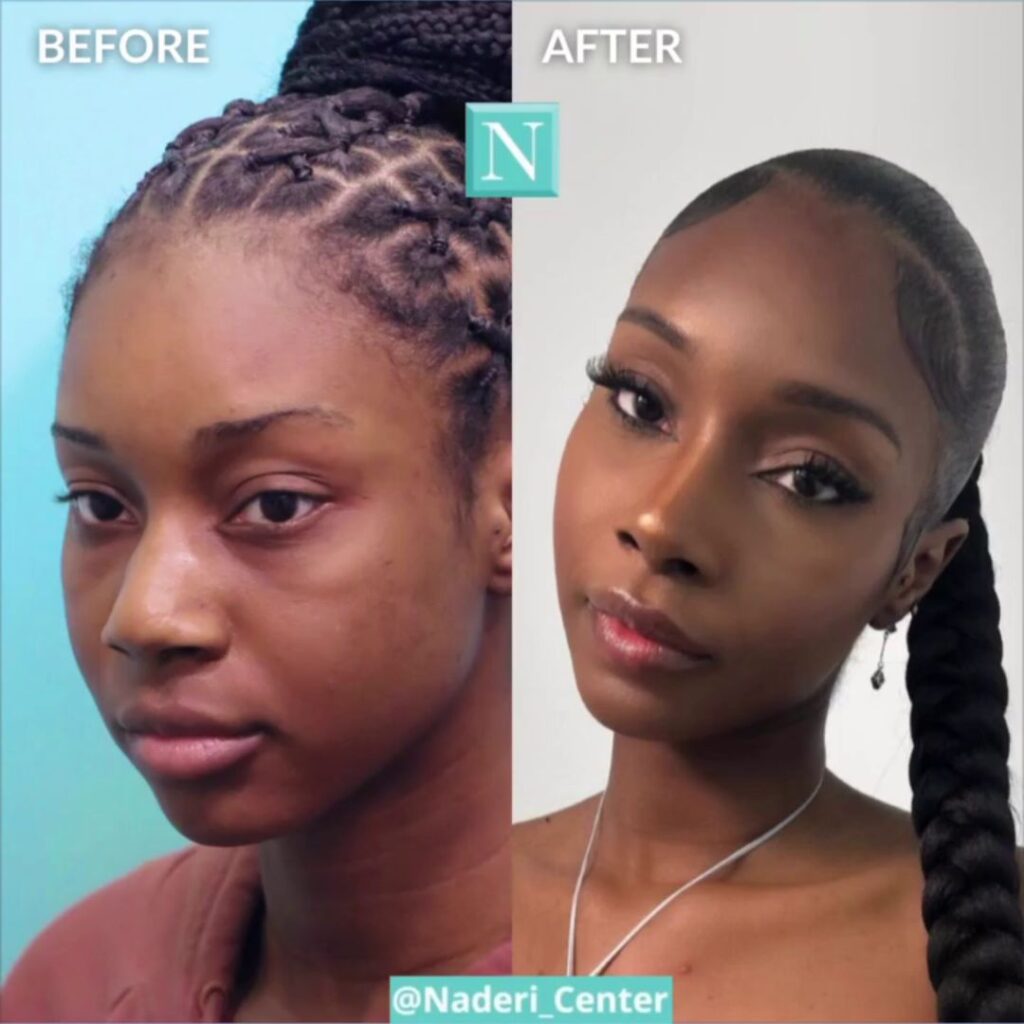
Anatomy Comparison: African vs. Caucasian vs. Asian Noses
| Feature | African | Caucasian | Asian |
|---|---|---|---|
| Bridge Height | Low/Flat | Moderate/High | Low |
| Tip Cartilage | Soft/Weak | Firm | Weak |
| Skin Thickness | Thick | Thin to Medium | Medium to Thick |
| Nostril Shape | Flared/Wide | Varies | Round |
| Tip Projection | Under-projected | Over-Projected | Under-projected |
Visualizing these differences helps patients understand why African rhinoplasty requires a customized approach.
Cultural and Emotional Considerations
Rhinoplasty stirs strong feelings and touches cultural nerves. Patients of African descent often meet societal pressure or worried relatives who fear the result will erase their identity. Dr. Naderi listens to each person and treats every concern with steady respect.
“There’s a cultural gravity to these decisions. My job is to enhance—not erase—what makes you, you.” – Dr. Naderi
The Naderi Difference in African American Rhinoplasty Surgery
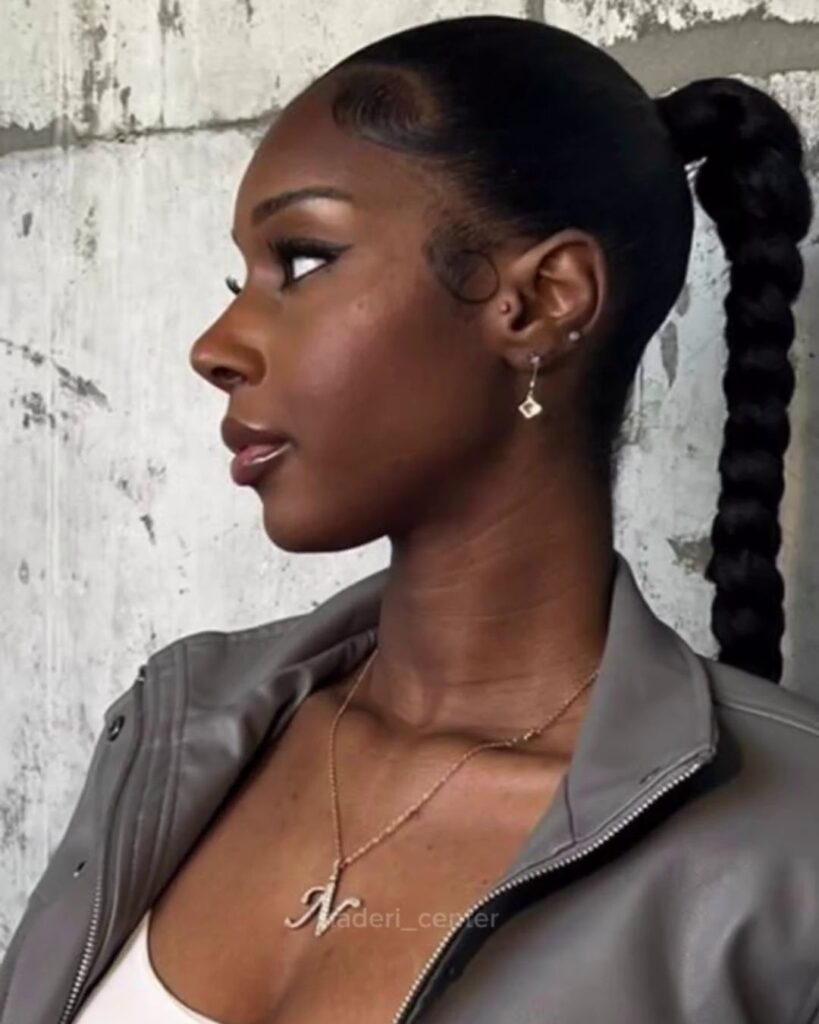
The past two decades have seen patients from throughout the U.S. and the world coming through his doors, thanks to his consistent, natural-looking results in rhinoplasty and revision rhinoplasty. Many discover his work through websites, before-and-after galleries, and social media, where even high-profile patients have openly tracked their own journey of healing and transformation. New patients often come in, seeking the exact results they have witnessed online.
What really differentiates Dr. Naderi from the rest is more than just his reputation as one of the world-renowned ethnic rhinoplasty specialists, including African American rhinoplasty experts. Hence, it is his honesty and integrity. Dr. Naderi will never recommend surgery, accept a patient’s trust or resources unless he is convinced that rhinoplasty is safe and really in the best interest of the patient.
Expert Skill with Compassionate Care
The patient who seeks rhinoplasty must meet clear physical criteria and many African American noses fall outside that range. The skin is thick and the cartilage is soft; so, both demand techniques that few surgeons master. A large number of surgeons proceed without the required training; they accept individuals whose tissue cannot support the operation and leave them with blocked airways, but also distorted contours that do not improve with time.
Dr. Naderi pairs expert surgical technique with respect for every patient’s distinct features and identity. He evaluates candidacy in detail, states what the operation will and will not achieve and drafts a plan that puts safety, function, as well as, appearance in that order. The method has turned him into a rhinoplasty ultra specialist and into a professional whom colleagues as well as patients trust.
Schedule a Rhinoplasty Consultation
If you’re seeking a Black nose job expert in Virginia, Maryland or Washington DC—or considering traveling for African American rhinoplasty—Dr. Shervin Naderi’s reputation speaks for itself. Schedule a consultation today to explore natural, ethnic-preserving results.
Contact The Naderi Center to book your appointment.
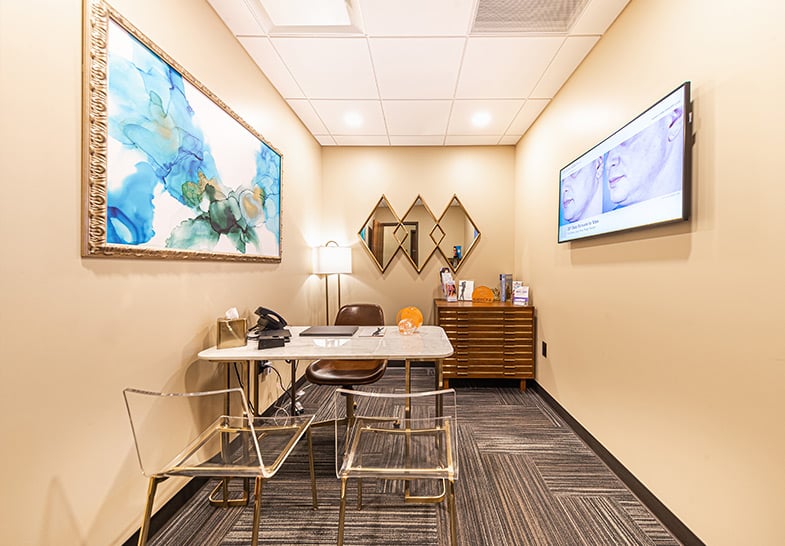
FAQs About African American Rhinoplasty Procedure
Will I still look like myself after surgery?
The goal is to improve you but maintain your identity. Dr. Naderi’s approach enhances your existing features while maintaining ethnic integrity. You’ll look like a refined version of yourself—not someone else.
Can I choose to look totally different after surgery?
For those patients seeking much more dramatic results, or for those whose noses are extremely distracting, once the new nose emerges, they can look like a dramatically different person. Dr. Naderi emphasizes the importance of pre-operative dialogue and discussion, and this is one of the many reasons he always insists on and performs computer morphing (imaging) before surgery to make sure he and his patients have the same vision and goals.
How long is recovery for thick skin?
Swelling can last 12 to 18 months. Taping and steroid injections help speed recovery. Final results appear at 3-5 years. However patients often start to enjoy their new nose shape as early as 1-3 months after their Rhinoplasty.
Can Dr. Naderi fix a bad nose job from years ago?
Yes but not always. He has been performing revision rhinoplasty for well over two decades and he has helped thousands of patients throughout his career however not all patients are candidates for revision surgery.
Is it common for Black patients to travel for rhinoplasty?
Very common. Many of Dr. Naderi’s African rhinoplasty patients fly in from out of state or abroad due to his expertise.
Will insurance cover any of the surgery?
Partial coverage may apply for breathing issues or deviated septum depending on your health insurance benefits and type. Our staff can help with pre-authorization.
Is non-surgical rhinoplasty a good alternative?
It can improve bridge height but cannot narrow nostrils or refine the tip long-term.
Can non-surgical rhinoplasty be combined with surgical nose jobs?
Dr. Naderi has thousands of patients who see him yearly for liquid nosejobs to maintain their bridge height but he sometimes also offers alar base reductions and/or nasal bone narrowing surgically through a quick 1 hour surgery to get the best possible results.
What is the best technique for nostril narrowing or alar base reduction in Black patients?
Dr. Naderi does not like visible scars. Because of this he uses a unique surgical approach that places the small incisions and scars inside the base of the nose instead of on the more common “side of the nostrils.” The usual or typical alar base reduction incision used by most plastic surgeons is sorely visible and cannot be easily hidden with makeup.
How can I tell if I’m a good candidate for African American rhinoplasty?
Not every Black patient is a candidate for African-American rhinoplasty. Unfortunately, many plastic surgeons lack the expertise to identify these patients or lack the ethics to say “no” to these patients and end up creating a bigger mess that often cannot be corrected or repaired easily. Being a true rhinoplasty ultra-specialist, Dr. Naderi will examine you and tell you the truth about your nose. If he offers you rhinoplasty, be sure that he thinks he can improve your nose for you. But also be ready to hear the truth if he tells you that you should leave your nose alone. Alternatively, he may recommend a non-surgical liquid approach for you.
Who is the ideal candidate for liquid nose job?
Patients with low or flat bridges are the best candidates for nonsurgical rhinoplasty. Elevating the bridge creates a more defined narrow shape and blends it into the tip and nostrils better, creating a more harmonious nose.
Who is an ideal candidate for African American rhinoplasty?
If the patient is someone with thinner skin and stronger cartilages, then regardless of ethnic background, more noticeable changes can be created. If the patient has extremely thick skin, then the only way to improve the shape of the nose is to add projection. And so if they have a flat nose (an under-projected nose), then that patient can have a really nice result as well. However, if the patient has very thick skin with very weak cartilages but already has the proper projection, or in fact has excess projection known as over-projection, then we try to talk them out of surgery at all costs.